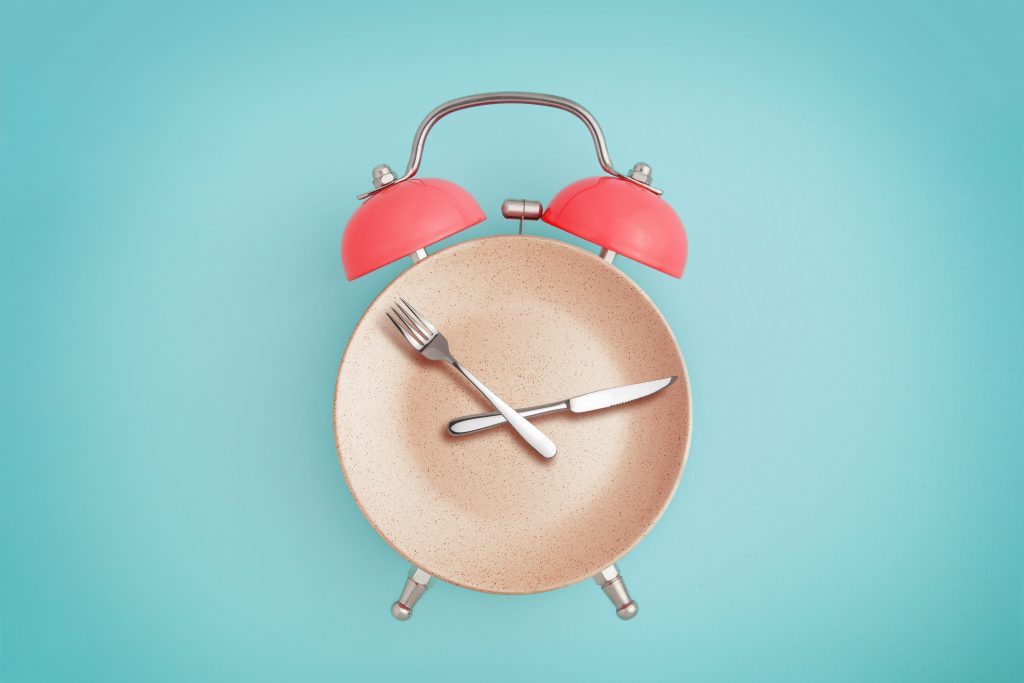High Intensity Interval Training and Intermittent Fasting

If you want to alter your body composition, you cannot overlook exercise. However, some forms of exercise are clearly more effective than others in this regard. Most people who exercise are still focusing on slow endurance-type exercises, such as running on a treadmill, which is not only time consuming but ineffective as well—especially for weight loss.
When it comes to shedding unwanted pounds and reworking your fat-to-muscle ratio, high intensity interval training (HIIT) combined with intermittent fasting is a winning combination that I don't think can be beat.
The HIIT approach I personally use and recommend is the Peak Fitness method, which consists of 30 seconds of maximum effort followed by 90 seconds of recuperation, for a total of eight repetitions.
Super Slow strength training may even be more effective than Peak Fitness cardio. While they both are highly effective, you can generate a higher cardiac output with Super Slow training as discussed in my recent interview with Dr McGuff.
I also recommend incorporating Buteyko breathing, which involves breathing only though your nose while working out. This raises the challenge to another level.
Intermittent fasting involves cutting calories in whole or in part, either a couple of days a week, every other day, or even daily as in the case of the scheduled eating regimen I recommend for those with insulin resistance (overweight, high blood pressure, diabetes, or taking statin drugs).
When you combine these two strategies, especially if you exercise in a fasted state, it effectively forces your body to shed fat because your body's fat burning processes are activated by exercise and lack of food.
HIIT Trumps Conventional Cardio for Fat Loss, Calorie Burning, and More
The featured article in The Leader1 discusses the many advantages of high-intensity interval training over conventional cardio, including the following five—all of which have sound scientific support:
1. Maximized calorie burn — As noted in the featured article,
"HIIT workouts burn more calories than traditional workouts, especially after the workout.
The two-hour period following a workout is referred to as EPOC (excess postexercise oxygen consumption), and it's when the body works to restore itself to pre-workout levels, in turn using more energy."
The American College of Sports Medicine2 recommends 20 minutes of more vigorous activity three days per week, noting that HIIT workouts tend to burn an extra 6-15 percent more calories compared to other workouts, thanks to the calories you burn after your exercise.
2. Optimized fat burn — HIIT also burns more body fat in less time.
3. Improved cardiovascular health — Contrary to conventional thought, HIIT is actually more efficient when it comes to improving your cardiovascular and heart health compared to long and slow endurance-type cardio.
According to the featured article: "In a recent 2014 study... vigorous HIIT-style workouts helped heart transplant patients keep their blood pressure levels in check better than moderate intensity exercise. This research suggests that high-intensity exercise might be a safe and efficient way to manage blood pressure in the long-term."
4. Greater endurance, speed, and performance — While it seems reasonable to assume that improved endurance goes hand in hand with longer workouts, this actually isn't necessary. HIIT can dramatically cut the time required by engaging both your aerobic and anaerobic systems.
As explained in the featured article:"During high-intensity surges, you're supposed to go all-out—until you reach that breathless, 'OMG-I-can't-take-this-anymore' feeling.
When you feel as though your heart is about to pound out of your chest, it's a sign you've crossed over into the anaerobic zone. Pushing yourself like this can help you become stronger and fitter over time."
In one study,3 recreational cyclists were able to double their endurance capacity in just two weeks by doing three sessions of sprint interval training per week!
5. Optimal efficiency — One of the real boons of HIIT is the fact that you can complete an entire workout in a total of 20 minutes. And the fitter you get, the less frequently you need to do them.
High intensity exercises also cuts down on the time required to notice fitness results. According to research presented at the American College of Sports Medicine Annual Meeting in 2011, just two weeks of HIIT can improve your aerobic capacity as much as doing endurance training for six to eight weeks.
Besides these advantages, other benefits associated with high intensity interval training include:
- Improved muscle tone
- Higher energy levels
- Boosted sex drive
- Optimized production of human growth hormone (HGH), also known as "the fitness hormone," which is important for strength, health and longevity
- Increased production of testosterone
